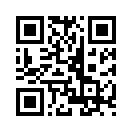13 Costly Marketing Mistakes
By Joe Gracia
I call them The 13 Costly Marketing Mistakes. While this list doesn't cover 'all' of the possible marketing mistakes, it does describe some of the most expensive, destructive and most 'common' made by many owners of traditional and home based businesses. Here are the first four.
1. ONE-STEP MARKETING
The 'One-Step' marketing strategy is the most common marketing strategy used by most small business owners today. It's everywhere -- and it's a big money waster. It consists of an ad, flyer or other marketing vehicle that simply 'announces' the business name, possibly lists a few basic features of the product or service and ends with an address and phone number.
The prospect is now expected to respond to this type of marketing piece by immediately purchasing the product or service.
Unless you are offering an extremely 'high-demand,' 'hard-to-get' product/service (an original Van Gogh painting for $100, Super Bowl tickets, etc.) this marketing strategy 'almost always' results in little or no response. This strategy totally disregards the 'psychological buying sequence' of consumers. It's very much like walking up to a stranger at a party and asking 'Would you marry me?' What do you think the response would be?
2. NOT KNOWING WHICH EFFORTS ARE WINNERS OR LOSERS
Not knowing for sure which of your marketing efforts are producing results and which are big 'money-wasters' is a guaranteed way to minimize your results. Even new businesses are investing in up to a 'dozen' marketing devices at any given time. Not only are we talking about traditional media, like newspaper or Yellow Page ads but 'many' others that may not be as obvious.
These marketing devices are either contributing to your business profit or destroying it. Most business owners don't have a clue as to which is which. If they did, they could easily guarantee increasing their profitable results by investing more in the winning devices and eliminating the money-wasting, losing devices.
3. NOT TELLING YOUR PROSPECTS WHAT TO DO
Expecting your prospects to 'know' exactly what you want them to do guarantees low results. Never, never, never assume. Take a look at most small business ads and you'll see that the business owners are almost always 'assuming' that the prospect will know exactly what they want them to do . . . without telling them.
At the bottom of the ad there will be a phone number and an address. Usually nothing more. Ask one of these business owners what they 'wanted' the prospect to do after reading their ad and they will most likely reply, 'Buy my product! Isn't it obvious??' The answer is a resounding 'No!'
For one, there is rarely enough information in the typical marketing piece for a consumer to make an 'immediate' buying decision. Therefore, that can't be the action expected from the consumer.
Second, the marketing competition for the prospect's consumer dollars is fierce. The prospect is usually exposed to dozens of ads for basically the same product/service. Obviously, he or she is not going to take 'action' on every single ad.
How do 'you' insure that they will respond to 'your' marketing piece and take the specific action you intended? Certainly, not by 'assuming' that they will 'know' or 'figure out' what you want them to do.
In order for a business owner to tell prospects exactly what action to take next, the business owner must know what that action should be. Once you know the 'psychological buying sequence' the next expected action becomes obvious.
4. CALL FOR MORE INFORMATION
Closely related to mistake number 3, is the marketing piece that again simply 'announces' the business name, lists a few basic features of the product or service, ends with an address and phone number . . . and then asks the prospect to 'Call for More Information.'
One of the last things a prospect wants, is to feel dumb. What information should they ask for? Does this mean that the business doesn't have a brochure or any other literature? Are they going to have to take notes?? Will there be a test?
The other thing 'no prospect' wants is to feel pressured. Whether it's true or not, the average prospect 'assumes' that they'll get a 'high-pressured' sales pitch if they call. Most do not want to risk this pain.
Therefore, the 'Call for More Information' tag is almost always ignored.
While 'some' prospects may not have a problem responding to this 'vague' directive, the majority do. If you doubt this . . . try putting it at the bottom of your marketing pieces. You'll soon be convinced that few prospects, if any, respond to the 'Call for More Information' marketing mistake.
Watch for the next four Marketing Mistakes in the next issue of the Marketing Advisor.
- By Joe Gracia (c) Copyright 2000 - Give to Get Marketing
Thursday, February 15, 2007
Joe (part 1)
Posted by
ScLoHo (Scott Howard)
0
comments
![]()
![]()
Subscribe to:
Posts (Atom)






